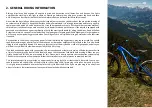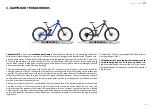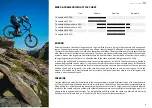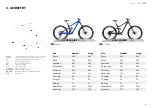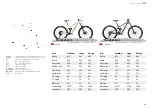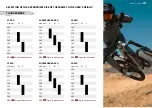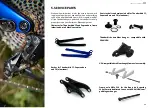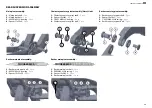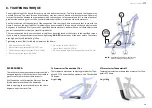
15
Most air shocks have a compression speed damp-
ing adjustment implemented by a single knob. It en-
ables smooth or gradual regulation until the shock
is blocked. This adjustment is most often used while
driving, adapting the shock to the type of route.
The fully open position is most often used when de
-
scending on uneven terrain when we want the best
traction. Slowing down the compression speed to
about half of the range is used in normal riding on
flat sections and in the case of riding on flow routes
so that the suspension does not absorb the user’s
speed while riding on moguls. This setting is the
most used and the most universal, also for people
who like to jump on a bike. The shock absorbs en-
ergy when hitting a punch, so some riders prefer to
increase compression damping.
The extreme setting is the least used, most often when
climbing steep climbs.
More advanced designs of the shock, mount a damper
with two regulators, fast and slow compression. Slow
compression damping acts on the first half of the shock
travel, mainly when braking, negotiating steep descents,
rides, or moguls. Increasing it improves the efficiency of
pedaling, prevents „swinging” and reduces the collapse
of the suspension when overcoming the above-men-
tioned elements. Similar to the case when you have only
one compression knob. Therefore, the adjustment is
made in the same way.
High-speed compression damping affects the second
half of the stroke of the shock from the middle of the de-
flection to the moment of compression.
15
Typically, less experienced riders do not use this adjust
-
ment and it remains in the open position. Users who
like to ride more aggressively, forcing the suspension to
work quickly, after hitting a large obstacle will feel that
the suspension dives too quickly to the end of the stroke,
they can counteract this phenomenon by increasing the
damping of quick compression.
COMPRESSION – speed of compression (deflection)




